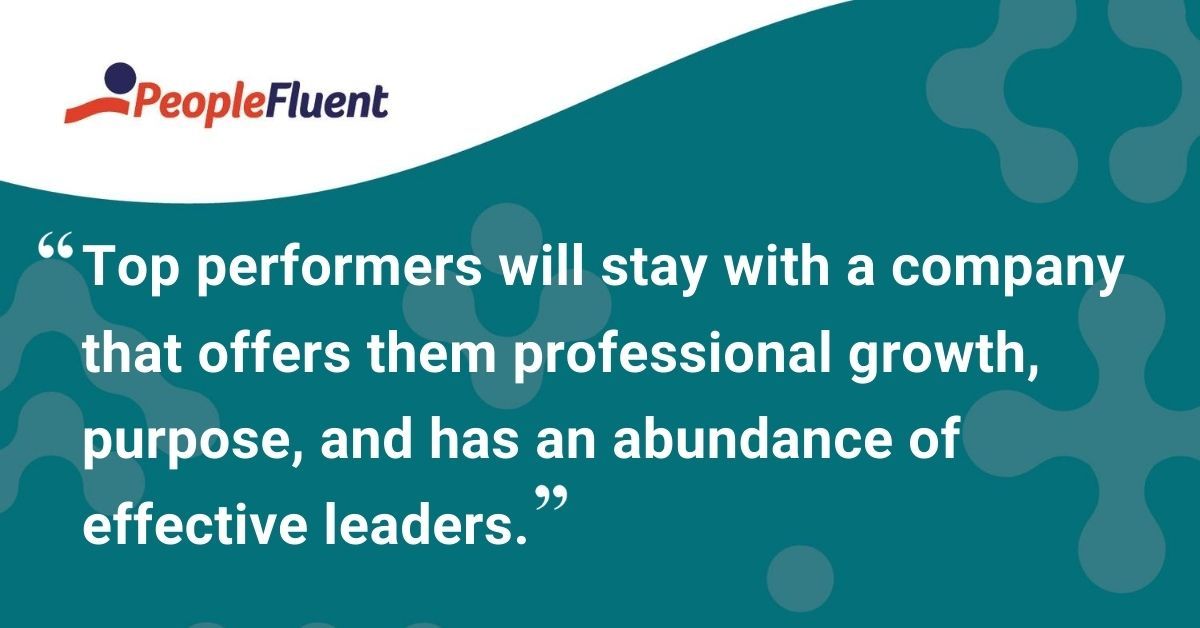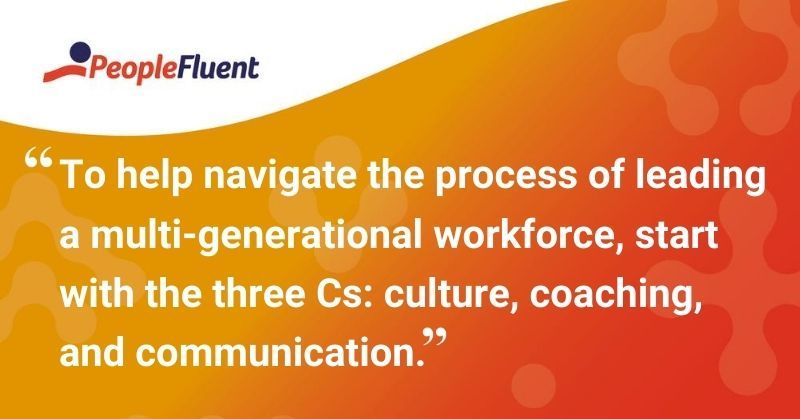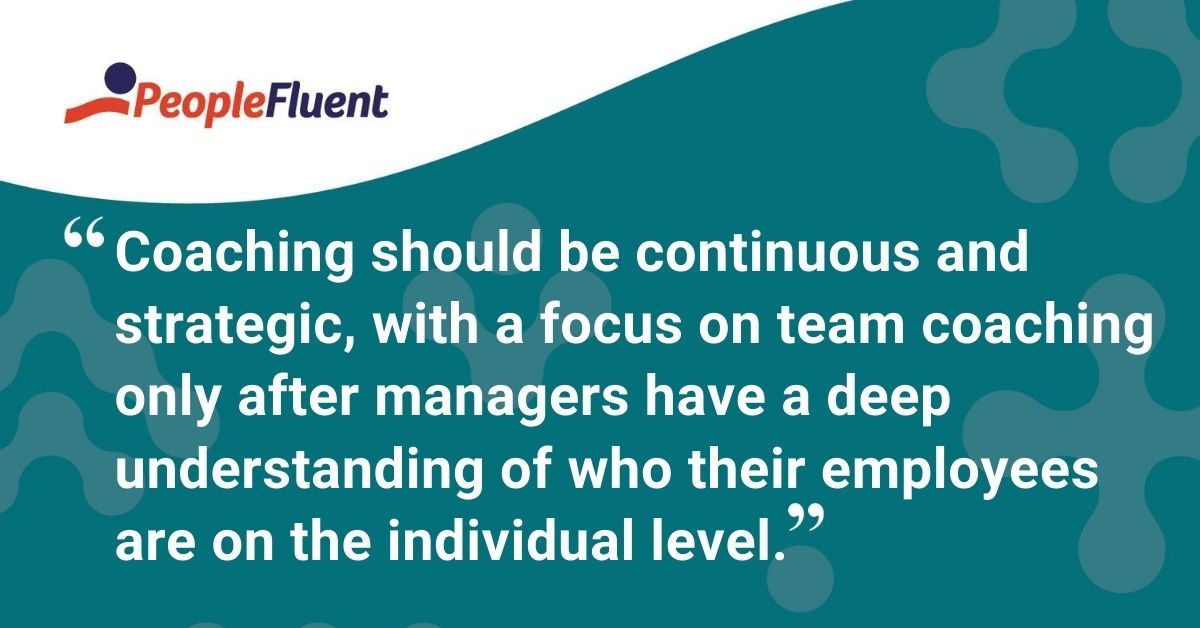Published: Aug 18, 2020Time to read: 8mins Category: Insights
The Three Cs: Talent Management Strategies to Engage Your Multi-Generational Workforce
In recent years, Millennials have been the topic of discussion for business leaders looking to tailor their talent strategies based on generational considerations. However, this narrow approach ignores the needs of other employee cohorts. In fact, a survey published in Deloitte’s 2020 Global Human Capital Trends found that just 6% of respondents believe their organization’s leaders are capable of effectively leading a multi-generational workforce.
Historically speaking, companies have relied heavily on an employee’s age and/or generation to inform and segment their talent management strategies. Considering that today’s workforces are composed of four or five generations, HR leaders must use a wider lens to ensure their talent strategies are engaging as many employees as possible.
Rather than focusing on segmentation based on generation, leaders should tailor the approach based on similar fundamentals of what their employees want out of work. These similarities may look slightly different based on your organization, but overall, top performers will stay with a company that offers them professional growth, purpose, and has an abundance of effective leaders.
In order to achieve this feat, leaders must be ready to effectively communicate their plans while also deploying talent strategies that align with the company culture and focus on the individual needs of their employees.

More from the blog: 'Drive Your Talent Strategy, Not Your System'
A Quick Look at the Five Generations
To successfully integrate a multi-generational workforce, it’s important for managers to look at the basic values of each generation.
Traditionalists (born 1928-1945)
Also known as the silent generation, this demographic still makes up 3% of today’s workforce. These individuals pride themselves on their immense loyalty and are valued for their strong work ethic. Traditionalists are the most formal of the five generations, both in how they work and live. They prefer to put a stronger emphasis on the service they give to their company rather than personal career development.
Baby Boomers (born 1946-1964)
Often considered to be the workaholic generation, Baby Boomers will put work above all else. They have a strong work ethic and value financial security, self-sufficiency, and ambition. Boomers have an individual working style and are satiated by personal gratification at work. Although thousands of Baby Boomers are exiting the workforce each day, many are staying in the workforce longer and at a higher rate than past generations.
Generation X (born 1965-1980)
Also known as the ‘latchkey kids’, Gen Xers are no strangers to personal freedom and responsibility. They value a strong work/life balance and generally aren’t responsive to being micromanaged. Gen Xers prefer to maintain their independence, both personally and professionally, and take an ambitious approach to work projects.
Millennial (born 1981-1996)
Millennials, also known as Gen Y, are the first generation to have grown up with the internet since birth. This makes them more agreeable to digital forms of communication and working. They value diversity and inclusion, a strong workplace culture, and are more purpose-driven than financially motivated. Millennials are also entrepreneurially-minded which means they’re likely to value career progression.
Furthermore, Millennials are now the largest generation in today’s workforce.
Generation Z (born 1997-2012)
Growing up post-Great Recession, Gen Zers are risk-averse and motivated by job security. Setting them apart from prior generations, Gen Zers are more likely to take an interesting role even if it means less pay. They have an attachment to digital tools and a strong inclination towards visual learning. In step with this demographic’s preference toward being socially connected—in and outside of the workplace—Gen Zers are content to have a friendly, casual employee/boss relationship.

You might also like: ‘How CHROs Can Maintain a Productive Workforce During Remote Work’
To help navigate the process of leading a multi-generational workforce, start with the three Cs:
1. Culture
Simply put, workplace culture is the environment an organization creates for its employees. While each generation will bring its own set of values and challenges to a company, it’s important for HR leaders to create a culture of inclusivity—especially since organizations are more generationally diverse than ever.
Contrary to early media hype, flexible hours, work/life balance, and (pre-COVID) open floor plans are NOT the essentials that define a desirable work culture for every generation in your workplace. Understanding how the different generations define workplace culture is important. Regardless of their age, many employees want to work for organizations that find solutions to the biggest problems facing our world today.
To ensure talent managers are ready for the challenge, here are a few questions to prepare:
- Is being environmentally responsible a top priority?
- What steps is the organization taking to foster a diverse and inclusive workplace?
- Is the organization community service-oriented?
Employees who frequently participate in workplace and volunteer activities are far more likely to be proud, loyal, and satisfied employees compared to those not given the opportunity. Allow employees to pool the resources they’ve acquired over their lifetimes to bring value, new ideas, and innovative concepts or campaigns into the office.
Giving employees an outlet to leverage their passion and energy into something that is impactful will be a helpful tool for retaining employees and recruiting like-minded talent. These efforts should go beyond ad hoc community service or D&I projects; they must be part of a company’s DNA and thus, a part of your employer brand, identity, and culture.
Keep reading: ‘4 Ways Talent Managers Can Boost Employee Morale’
2. Coaching
Employee coaching involves creating a shared understanding of what the tasks at hand are and how they should be handled. Rather than taking a typical, authoritative approach to coaching, managers should look for ways to collaborate with employees. This helps employees plan for better performance by identifying and targeting areas of improvement.
In a multi-generational workforce, this type of coaching is likely to vary. For instance, if a manager is coaching a Gen Zer and a Baby Boomer on how they can relate with one another, it’s important to know their individual characteristics. Without a mutual understanding of the workers’ traits and unique differences, coaching efforts may fall short—inevitably setting employees up for failure.
Talent managers should familiarize themselves with the following, based on each generation they’re managing:
- communication and behavioral styles
- work habits
- common stressors and individual drivers
- learning and development—or, how the employee learns best
- strengths and weaknesses
- soft skills
While the above will give managers a good idea of how to approach different cohorts, it will also allow them to ensure collaboration between the different generations. Coaching should be continuous and strategic, with a focus on team coaching only after managers have a deep understanding of who their employees are on the individual level. Then, make an effort to pair up employees from different generations to work together on projects and performance goals that align with their mutual strengths.

Related reading: ‘4 Innovative Tactics Your Talent Management Strategy Needs’
3. Communication
Uniting a multi-generational workforce requires managers to act as a bridge between the different cohorts. Finding a healthy balance of verbal, digital, and written communication can help managers finesse the generational differences and create more transparency across teams.
Managers should tailor their communication style for each cohort with these considerations:
Verbal vs Digital
A major difference between the generations is how they prefer to communicate. Many Baby Boomers will prefer a phone call or in-person conversation while Gen Z or Millennials will be more responsive to chat or email. Perhaps a Gen Z employee is uncomfortable responding to a phone call and they don’t answer straight away. If managers are less flexible to these communication preferences, it could lead to performance delays.
Casual vs Formal
As startup culture invited a more casual, laid-back working style, many workforces have followed suit. The office formalities have seemingly fallen to the wayside and managers may have informal 1:1s with employees in a break room or via chat. Millennial and Gen Z workers will likely prefer this casual style over the formal one, yet Traditionalists, Baby Boomers, and Gen Xers could find it to be lackadaisical.
Individualistic vs Collaborative
Traditionalists, Gen Xers, and Baby Boomers are more apt to embrace individualistic working styles while the younger generations tend to take a collaborative approach. What’s more, Millennials and Gen Zers may seek out feedback and guidance more often than Gen X, Traditionalist, or Baby Boomer employees do.
While leaders may communicate differently with their older and younger populations, they must ensure the message is the same. If it’s not, it could lead to friction between employees. Employees who feel heard on a personal level will also feel empowered to communicate effectively regardless of the cohort(s) they’re addressing.
Editor’s Note: This article was originally published in 2015 and has been updated with recent insights and information.